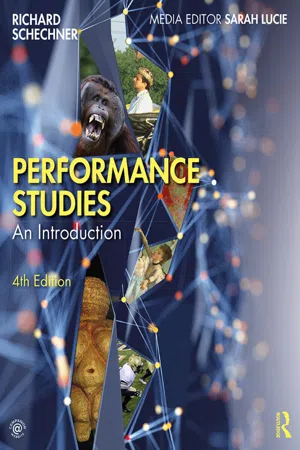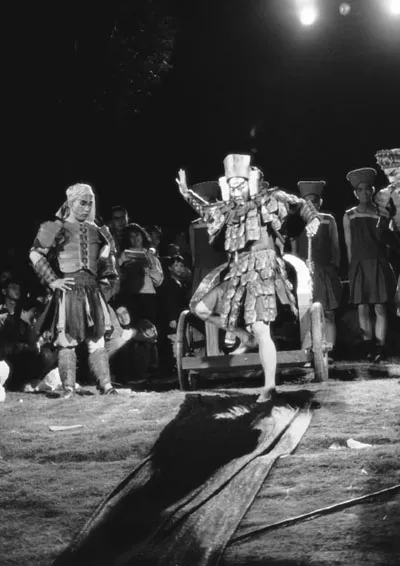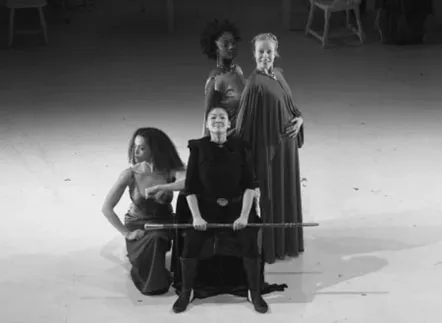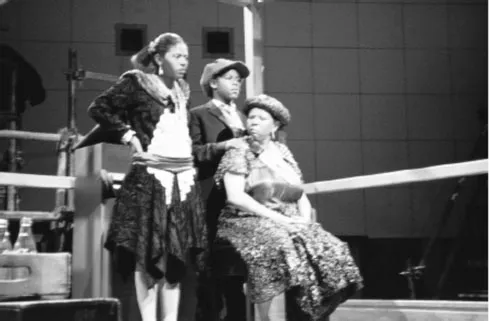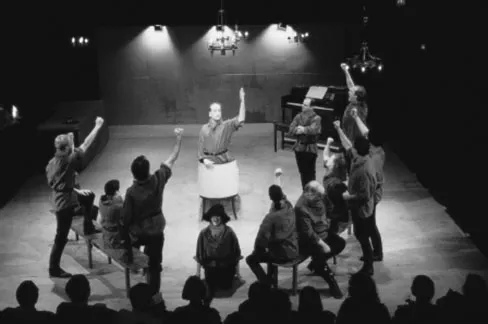Introducing this book, this field, and me
What is performance? What is Performance Studies (PS)? Performance is a broad spectrum of actions ranging from play, games, sports, popular entertainments, and rituals to the performing arts, professional roles, political personae, media, and the constructions of race, gender, and identity in everyday life. To perform is to act in a play, to dance, to make music; to play your life roles as friend, child, parent, student, and so on; to pretend or make believe; to engage in sports and games; to enact sacred and secular rituals; to argue a case in court or present a PowerPoint in class … and many more activities, too. PS is the academic discipline whose topic is the broad spectrum.
The book you hold in your hand is “an” introduction to performance studies. There are other introductions, and that pleases me. The one overriding and underlying assumption of PS is that the field is open. There is no finality to performance studies, either theoretically or operationally. There are many voices, themes, opinions, methods, and subjects. As I will explain later in this chapter, anything and everything can be studied “as” performance. But this does not mean PS as an academic discipline lacks specific subjects to investigate or questions to focus on.
PS’s openness doesn’t mean there are no values. People want, need, and use standards to live, write, think, and act. As individuals and as parts of communities, people participate and interact with other people, other species, the planet, and whatever else is out there. The values guiding people are not “natural,” transcendent, timeless, God-given, inalienable. Values belong to ideologies, sciences, arts, religions, politics, and personal preferences. Values are hard-won and contingent, changing over time according to social, historical, and personal circumstances. Values are a function of cultures, nations, groups, and individuals.
This book embodies the values, theories, and practices of performance studies as understood by one particular person in the ninth decade of his life. This person is a Jewish Hindu Buddhist atheist living in New York City, married, the father of two children. He is a University Professor Emeritus at New York University where he taught PS for half a century (1967–2017). He is the Editor of TDR: The Journal of Performance Studies. He directs plays, lectures, leads workshops, and writes books, essays, plays, poems, and short stories (see figure 1.1). He has travelled and worked in many parts of the world. Who I am is not irrelevant – because I will be leading you on a journey, you ought to know a little about your guide.
Because performance studies is so broad-ranging and open to new possibilities, no one can actually grasp its totality or press all its vastness and variety into a single book. My points of departure are my own teaching, research, artistic practice, and life experiences. But I am not limited by these. I will explore ideas far from my center, some even contrary to my values and opinions.
Defining performance
You are performing right now. How so? Are you in your dorm or apartment reading this book? Or maybe you’re in a crowded coffee shop or a quiet library. If you are online, you are probably multitasking – reading even while you’re chatting with friends. You know how to switch between schoolwork and social life. Wherever you are, whatever you’re doing, think about how you’re sitting, or lying down, or whatever. Does it matter (to you or to anyone?) how you look, how you present yourself to the world? Have you combed your hair, are your clothes neat or sloppy, fancy or plain? Consider the various “yous” – different personae – you enact during a single day. The student you, the friend you, the daughter or son you, the playful you, the romantic you, and so on. Right now would you use the same body language if you were enacting another of your personae? Would you be wearing the same clothes? Are you studying alone or in a group? What did you do when you first woke up? Go to the bathroom, brush your teeth, grab a coffee? Say “Hi” to whomever was next to you or in the room across the hall? Did you look in a mirror, make a face, check yourself out? Were you performing for and to yourself?
How do these circumstances – and whatever others are operating throughout your life – affect how you present yourself? Is there a difference between “presenting” and “performing”? (See Goffman box.)
Erving Goffman
Defining performance
A “performance” may be defined as all the activity of a given participant on a given occasion which serves to influence in any way any of the other participants. Taking a particular participant and his performance as a basic point of reference, we may refer to those who contribute to the other performances as the audience, observers, or co-participants. The pre-established pattern of action which is unfolded during a performance and which may be presented or played through on other occasions may be called a “part” or a “routine.” These situational terms can easily be related to conventional structural ones. When an individual or performer plays the same part to the same audience on different occasions, a social relationship is likely to arise. Defining social role as the enactment of rights and duties attached to a given status, we can say that a social role will involve one or more parts and that each of these different parts may be presented by the performer on a series of occasions to the same kinds of audiences or to an audience of the same persons.
1959, The Presentation of Self in Everyday Life, 15–16
Erving Goffman (1922–82): Canadian-born anthropologist who studied the performances and rituals of everyday life. His books include The Presentation of Self in Everyday Life (1959), Behavior in Public Places (1963), Interaction Ritual (1967), and Frame Analysis (1974).
Whatever you are doing now, whoever you are at this moment, whatever you did when you began your day, you were and are performing. Later on in this chapter, I will help you distinguish between “is” performing and “as” performing. For now, I want you to think about the assertion that performing is an ongoing, never-ending activity or set of activities. Sometimes one is aware of performing and sometimes one is not aware of it.
Hopefully I’ve made you more aware than you ordinarily are. This awareness ranges from just a flick of consciousness to a total focus on repeating an action or getting an action right, or seeing how someone else accomplishes an action – from the kind of focus demonstrated by a ballet dancer or a baseball player to mini-movements hardly noticeable because they are so “ordinary.”
What are performance and performance studies theoretically? One way to parse existence is to distinguish among:
